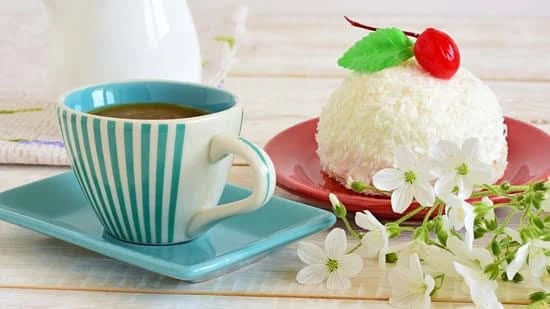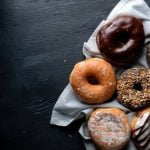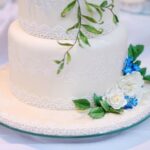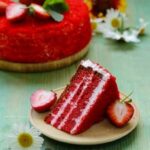Cake decorating is a fun and rewarding hobby that allows beginners to unleash their creativity and create beautiful edible masterpieces. Whether you are looking to impress your friends and family with homemade cakes or simply want to explore your artistic side, cake decorating is the perfect activity for you. With a few essential tools and some simple techniques, beginners can easily achieve stunning results.
In this article, we will take you on a journey into the world of cake decorating, starting with why it is such a fun and rewarding hobby for beginners. Cake decorating not only allows you to express your creativity but also provides a sense of accomplishment when you see the finished product. The joy of seeing the smiles on your loved ones’ faces when they taste your delicious creations is truly priceless.
Before diving into the exciting world of cake decorating, it is important to have the right tools and supplies. In the next section of this article, we will discuss the essential tools needed for cake decorating at home. From piping bags and tips to spatulas and turntables, we will guide you through everything you need to get started. Armed with these essential tools, you will be ready to embark on your cake decorating journey.
Essential Tools and Supplies Needed for Cake Decorating at Home
Basic Tools for Cake Decorating
Before you embark on your cake decorating journey, it’s important to have the essential tools and supplies necessary to create beautiful designs. Here are some of the basic tools every beginner should have in their cake decorating arsenal:
- Cake Turntable – A cake turntable is a must-have tool that allows you to easily rotate and decorate all sides of your cake without straining your wrists.
- Decorating Bags and Tips – Invest in a set of high-quality piping bags and a variety of tips to achieve different designs, such as stars, flowers, and writing.
- Offset Spatula – An offset spatula is useful for smoothing frosting and creating clean edges on your cakes.
- Bench Scraper – A bench scraper is great for smoothing the sides of your cake for a polished look.
- Icing Smoother – This tool helps achieve a smooth finish on the top and sides of your cake by eliminating any imperfections.
- Cake Leveler – Use a cake leveler to ensure that your cakes are evenly sliced for stacked creations or layered fillings.
Essential Supplies for Cake Decorating
In addition to the basic tools listed above, there are several supplies you will need to bring your cake decorating vision to life:
- Fondant or Gum Paste – Fondant and gum paste are pliable icing-like substances that can be rolled out and draped over your cakes or used for sculpting decorative elements.
- Food Coloring Gel or Powder – These concentrated coloring agents are used to tint frosting, fondant, or gum paste in various shades.
- Edible Decorations – Sprinkles, edible glitter, colored sugar, and other decorative elements add flair to your designs.
- Brushes – Fine-tipped brushes come in handy when painting intricate details onto fondant decorations.
- Turntable Mat or Non-Slip Pad – Place your cake turntable on a non-slip mat or pad to ensure stability while decorating.
- Parchment Paper or Wax Paper – These are useful for creating templates, piping practice designs, or for preventing sticking when rolling out fondant.
By having these tools and supplies at hand, you’ll be well-prepared to bring your cake decorating ideas to life and create stunning designs that will impress your friends and family. Remember, as with any hobby, practice makes perfect. Start with simple projects and gradually work your way up to more complex designs as you gain confidence and experience in cake decorating.
Beginner-Friendly Cake Decorating Techniques and Tips
Cake decorating can seem intimidating for beginners, but with the right techniques and tips, it can become a fun and enjoyable hobby. Whether you’re looking to make a simple cake for a family gathering or want to create intricate designs for special occasions, there are beginner-friendly techniques that will help you achieve beautiful results. Here are some tips to get you started on your cake decorating journey:
- Start with the right tools: Before diving into cake decorating, it’s important to have the essential tools and supplies on hand. This includes piping bags and tips, offset spatulas, a turntable, cake leveler, and various shaping tools. Investing in quality equipment will make a big difference in the finished product.
- Practice piping: Piping is one of the fundamental skills in cake decorating. Start by practicing basic shapes like dots, lines, rosettes, and shells using different piping tips. Once you’ve mastered these basic techniques, you can then move on to more advanced designs like flowers and borders.
- Get creative with buttercream: Buttercream is an easy-to-use frosting that allows for endless design possibilities. Experiment with different colors by adding food coloring to buttercream icing and practice writing messages or creating patterns on parchment paper before transferring them onto your cake.
Once you’re comfortable with these beginner-friendly techniques, you’ll be ready to move on to more advanced skills such as working with fondant or gum paste. The key is to practice regularly and not be afraid to make mistakes – after all, it’s all part of the learning process.
With these beginner-friendly techniques and tips in mind, you’ll be well-equipped to start your journey into the wonderful world of cake decorating. Remember to have fun along the way as you develop your skills and unleash your creativity through beautiful cake designs.
Simple Cake Decorating Ideas for Beginners
Cake decorating can seem intimidating for beginners, but with a little practice and some simple ideas, you can create beautiful and delicious cakes right at home. In this section, we will explore some easy cake decorating ideas that are perfect for beginners.
Buttercream Roses
One of the most popular and beginner-friendly cake decorating techniques is creating buttercream roses. These delicate floral designs can be easily achieved with a piping bag fitted with a petal tip. Start by holding the piping bag at a 45-degree angle and pipe a small dot in the center of your cake.
Then, slowly pipe small petals around the dot, moving in a circular motion until you’ve created a full rose shape. Practice on a parchment paper first to get comfortable with the technique.
Fondant Cutouts
Fondant is a smooth dough-like icing that is used to cover cakes, but it can also be used to create fun shapes and designs. For beginners, fondant cutouts are an easy way to add decorative elements to your cakes. Roll out your fondant on a clean surface lightly dusted with powdered sugar or cornstarch.
Use cookie cutters or freehand cutting to create shapes like hearts, stars, or flowers. Attach the cutouts onto your cake using a small amount of water as adhesive.
Chocolate Ganache Drip
If you’re looking for a simple yet impressive cake decoration idea, try creating a chocolate ganache drip effect. To do this, make sure your cake is already frosted smoothly. Heat up heavy cream in a saucepan until it starts to simmer, then pour it over chopped dark chocolate in a bowl.
Stir until smooth and let it cool slightly before spooning it over the edges of your finished cake so that it drips down towards the center. The rich and glossy ganache adds an elegant touch to any cake.
These are just a few simple cake decorating ideas that beginners can try. Remember, practice makes perfect, so don’t be afraid to experiment and have fun with your creations. With time and patience, you’ll soon be creating stunning cakes that will impress your loved ones.
Step-by-Step Guide to Decorating a Basic Cake
Decorating a cake can seem intimidating, especially for beginners. However, with a step-by-step guide, you can easily learn the basics of cake decorating and create beautiful designs at home. In this section, we will provide you with a detailed step-by-step guide on how to decorate a basic cake from leveling to crumb coating.
Step 1: Leveling the Cake
Before you start decorating your cake, it’s important to level it first. Leveling ensures that the surface of the cake is even and makes it easier to stack multiple layers. To level your cake, use a serrated knife or a leveler to carefully remove any domed tops. Take your time and work slowly to ensure an even cut.
Step 2: Crumb Coating
After leveling your cake, it’s time to apply a crumb coat. A crumb coat is a thin layer of icing that helps seal in any loose crumbs and provides a smooth base for your final coat of frosting. To crumb coat your cake, follow these steps:
- Add a generous amount of icing on top of your leveled cake.
- Using an offset spatula, spread the icing across the top and sides of the cake.
- Smooth out the icing as much as possible, but don’t worry too much about perfection at this stage.
- Once the entire cake is covered with the initial layer of icing, refrigerate it for about 15-20 minutes or until firm.
- After chilling, apply another layer of frosting as your final coat. This time, focus on making it as smooth and even as possible.
Step 3: Decorating Your Cake
Once you have completed these two essential steps – leveling and crumb coating – you are ready to start decorating your cake. The possibilities are endless when it comes to cake decorations, but a few simple ideas for beginners include:
- Piping buttercream rosettes or flowers on top of the cake.
- Using fondant cutouts to create shapes, such as hearts or stars, and placing them on the sides of the cake.
- Adding sprinkles or edible pearls for a touch of color and texture.
By following this step-by-step guide, you can successfully decorate a basic cake from start to finish. Remember to practice and have fun with it. As you gain more experience, you can gradually explore more advanced techniques and create even more intricate designs.
Showcasing your Creativity
Adding personal touches to cake designs is a great way to showcase your creativity and make your cakes unique. There are many easy ways to add your own personal style to your cake decorations, whether you are a beginner or more experienced in cake decorating.
One simple way to add a personal touch is by incorporating custom colors into your cake design. Think about the occasion or theme of the cake and choose colors that reflect that. You can use food coloring to dye buttercream frosting or fondant in any color you desire. Experiment with different shades and combinations to create a visually appealing and personalized look for your cake.
Another way to personalize your cake design is by using edible decorations that have special meaning to you or the person you are making the cake for. This could include adding edible flowers, such as pansies or violets, if it’s their favorite flower, or using small edible figurines that represent their hobbies or interests. These small details will not only add a personal touch but also make the recipient feel special.
Additionally, consider incorporating unique shapes or patterns into your cake designs. You can use stencils, cookie cutters, or even freehand techniques like piping zigzags or creating patterns with different colored icing on a smooth surface. This will give your cakes an extra wow factor and allow you to showcase your artistic skills.
| Ways to Add Personal Touches | Examples |
|---|---|
| Custom colors | Using food coloring to create personalized shades |
| Edible decorations | Incorporating edible flowers or special figurines |
| Unique shapes and patterns | Using stencils or freehand techniques for creative designs |
Exploring Different Themes and Styles
Cake decorating is not only a fun and rewarding hobby for beginners, but it also allows for endless creativity when it comes to exploring different themes and styles. Whether you are celebrating a birthday, holiday, or any special occasion, incorporating unique cake designs can make the celebration even more memorable. Here are some cake decorating ideas that will surely impress your loved ones.
For birthdays, consider personalizing the cake with the recipient’s favorite hobby or interest. If they love sports, create a cake shaped like a football or basketball. For someone who loves animals, a cute animal-themed cake with fondant figurines would be perfect. You can also add their name or age on the cake using colorful piping gel or edible markers.
Holidays provide plenty of opportunities for themed cakes. For Christmas, you can decorate the cake with snowflakes made from royal icing or create a Santa Claus-shaped cake using buttercream frosting. On Halloween, try making a graveyard-themed cake with cookie tombstones and gummy worm “dirt.” Other holidays such as Easter, Valentine’s Day, and Thanksgiving also offer countless decorating possibilities.
Celebrations like baby showers, anniversaries, and engagement parties call for elegant and sophisticated cakes. Opt for pastel colors and delicate floral decorations for baby showers. Anniversaries can be celebrated with tiered cakes adorned with sugar flowers to match the couple’s wedding bouquet. For an engagement party, go bold with metallic accents and intricate piping designs.
No matter the occasion, remember that practice makes perfect when it comes to cake decorating. Experimenting with different techniques and themes will help you grow as a decorator. Don’t be afraid to try new things and let your creativity shine through each design. Your loved ones will be amazed by your homemade masterpieces that not only taste delicious but are visually stunning as well.
Troubleshooting Common Cake Decorating Mistakes
One of the challenges that beginner cake decorators often face is dealing with common mistakes that can happen during the decorating process. Smudges, cracked icing, and uneven surfaces are some of the most common issues that can arise when decorating a cake. Fortunately, there are simple solutions to fix these mistakes and achieve a polished finish.
When it comes to smudges on your cake, the first thing you can do is gently wipe off any excess frosting or crumbs with a clean paper towel or a small offset spatula. Next, use a smoothing tool or bench scraper to smooth out the surface of the cake.
Start from the bottom and work your way up while applying gentle pressure. If the smudge is still visible, you can try using a hot spatula to melt and smooth out any imperfections.
Cracked icing can be caused by various factors such as overmixing your buttercream or using too much liquid in your frosting recipe. To fix this issue, you can simply add a small amount of powdered sugar to thicken your buttercream and help bind it together. Another option is to gently heat the cracked area with a blow dryer on low heat while smoothing it out with an offset spatula.
Uneven surfaces can occur due to uneven spreading of frosting or an unevenly baked cake layer. To fix this problem, you can start by adding more frosting to areas where it appears thinner. Use an offset spatula or a butter knife to spread the frosting evenly across the entire surface of the cake. If your cake layers are not level, you can carefully trim them using a serrated knife before stacking and frosting.
By following these troubleshooting steps, beginners can effectively address common cake decorating mistakes and achieve professional-looking results for their homemade creations. Don’t be discouraged by these mishaps; they are all part of the learning process in refining your skills as a cake decorator. With practice and patience, you will soon become adept at fixing these issues and creating stunning cake designs that will impress your loved ones.
Taking it to the Next Level
Now that you have mastered the beginner-friendly cake decorating techniques and tips, it’s time to take your skills to the next level with intermediate techniques. These techniques will allow you to create more intricate and detailed designs on your cakes, impressing both yourself and your loved ones.
One intermediate technique that you can master is piping. Piping involves using a pastry bag fitted with different types of decorating tips to create various shapes and designs on your cake.
From delicate borders to intricate lace patterns, piping allows you to add beautiful finishing touches to your creations. Some commonly used piping tips include the round tip for creating dots and writing, the star tip for making rosettes and shells, and the leaf tip for adding foliage to floral decorations.
Another intermediate technique that can elevate your cake decorating game is working with fondant. Fondant is a smooth, pliable icing that can be rolled out and draped over cakes for a flawless finish. It offers endless possibilities for creating 3D decorations such as flowers, bows, and figurines. To work with fondant, you will need tools like a rolling pin, fondant smoother, and various cutters or molds to shape your designs.
Finally, mastering the art of sugar flowers is a key skill in intermediate cake decorating. Sugar flowers add an elegant touch to any cake design and can be made from either gum paste or fondant mixed with tylose powder for added stability. While it may take some practice, learning how to create lifelike petals, leaves, and flower centers will allow you to create stunning floral arrangements that are sure to impress.
By incorporating these intermediate cake decorating techniques into your repertoire, you can expand your creative possibilities and take pride in creating even more professional-looking cakes at home.
| Intermediate Cake Decorating Techniques | Description |
|---|---|
| Piping | Using a pastry bag and different tips to create shapes and designs with icing |
| Fondant Work | Working with smooth, pliable icing to create flawless finishes and 3D decorations |
| Sugar Flowers | Creating lifelike flowers from gum paste or fondant mixed with tylose powder |
Conclusion
In conclusion, cake decorating is a fun and rewarding hobby for beginners that allows you to embrace your artistic side and create homemade cake masterpieces. By starting with essential tools and supplies, learning beginner-friendly techniques and tips, and exploring simple cake decorating ideas, you can begin your journey into the world of cake decoration.
Throughout this article, we have provided step-by-step guidance on decorating a basic cake, from leveling to crumb coating. We have also discussed ways to add personal touches to your designs, exploring different themes and styles for birthdays, holidays, and celebrations. Additionally, we have addressed common cake decorating mistakes and how to troubleshoot them.
Now that you have learned the basics of cake decoration, it’s time to take it to the next level. Intermediate techniques await you as you continue on your creative journey. With practice and determination, you will master more intricate designs such as piping techniques, sugar flowers, or even sculpting.
So embrace your artistic side and delight your loved ones with your homemade cake masterpieces. Whether it’s a birthday party or a special celebration, your beautifully decorated cakes will not only be a treat for the taste buds but also a visual delight.
Keep experimenting with new techniques and themes while enjoying the process of creating edible works of art. Cake decorating is not just a hobby; it’s an expression of creativity that brings joy to both the creator and those who enjoy their delectable creations.
Frequently Asked Questions
What is the easiest cake to decorate?
The easiest cake to decorate would likely be a sheet cake. With its flat surface and straightforward shape, it provides ample space for creativity without the complexities of multiple tiers or intricate designs.
Sheet cakes are typically rectangular or square in shape, making them ideal for easy decorating techniques such as piping simple patterns or writing messages. Additionally, sheet cakes can be easily covered with a smooth layer of frosting, allowing for straightforward decorations like sprinkles or edible flowers.
What does a beginner need for cake decorating?
A beginner in cake decorating would need a few key tools and supplies to get started. First and foremost, a good quality offset spatula is crucial for smoothing and spreading frosting onto the cake’s surface. Piping bags and various tips are also essential for creating different decorative effects with buttercream or royal icing.
A turntable can greatly assist in evenly frosting the sides of the cake, while an angled palette knife proves useful in achieving clean edges and leveling off excess frosting. Lastly, an assortment of food coloring gels will enable beginners to add vibrant hues to their creations.
How to decorate simple homemade cake?
To decorate a simple homemade cake, there are several easy yet effective techniques that can be employed. First, it is important to start with a smooth canvas by leveling off the top of the cake if necessary, ensuring an even surface for decorating. One option is to cover the entire cake with a smooth layer of buttercream or cream cheese frosting using an offset spatula or palette knife.
This blank canvas can then be enhanced with simple decorations such as piped scallops around the edges or rosettes on top using a star-shaped piping tip. For added visual interest, sprinkles or finely grated chocolate can be lightly pressed onto the sides of the frosted cake while it is still moist.

Welcome to our cake decorating blog! My name is Destiny Flores, and I am the proud owner of a cake decorating business named Cake Karma. Our mission is to provide delicious, beautiful cakes for all occasions. We specialize in creating custom cakes that are tailored specifically to each customer’s individual needs and tastes.





